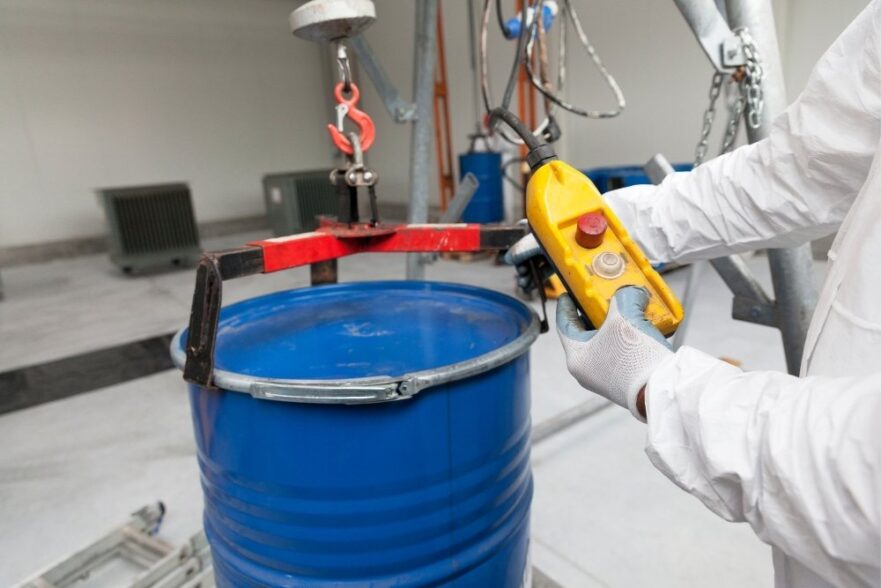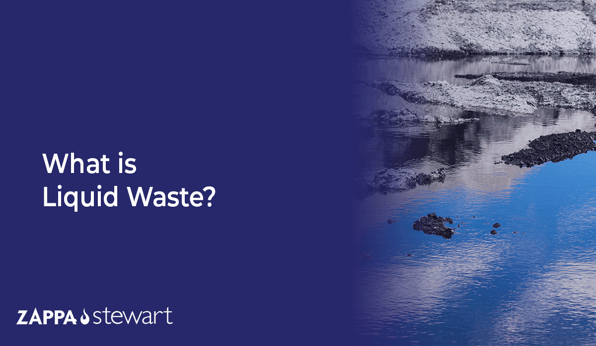Industrial Wastewater Treatment: Customized Solutions for Complex Wastewater Challenges
Industrial Wastewater Treatment: Customized Solutions for Complex Wastewater Challenges
Blog Article
Just How Liquid Waste Disposal Functions: A Thorough Introduction of Methods and Technologies Employed

Overview of Liquid Waste Types
The intricacy of fluid waste types requires a complete understanding of their features and effects for disposal. Fluid waste can extensively be categorized into several types, consisting of commercial, metropolitan, farming, and harmful waste. Each classification displays distinct homes, requiring details administration methods to alleviate environmental and wellness threats.
Industrial liquid waste originates from manufacturing procedures and usually consists of a series of pollutants, such as heavy steels, solvents, and organic compounds. Metropolitan fluid waste, mainly comprising wastewater from houses and industrial establishments, has natural matter, nutrients, and virus (industrial wastewater treatment). Agricultural liquid waste, including drainage from farms, might include fertilizers, chemicals, and animal waste, posturing dangers to water quality and ecological communities
Harmful liquid waste is defined by its toxicity, sensitivity, or potential to trigger harm. This category consists of substances like acids, bases, and particular chemicals that require rigorous handling and disposal protocols. Recognizing these diverse fluid waste types is vital for developing reliable disposal methods and making sure compliance with environmental laws. Proper category and characterization are essential for carrying out appropriate treatment strategies and minimizing the negative influences on public health and the atmosphere.
Physical Therapy Methods

Testing is the first step, where larger fragments and debris are removed from the fluid waste utilizing screens or grates. In sedimentation containers, much heavier particles settle at the base, developing a sludge layer, while the clarified fluid can be additional dealt with.
Filtering is another essential approach that includes passing the fluid with porous products, such as sand or membranes, to record smaller fragments. This action enhances the high quality of the fluid, making it appropriate for subsequent treatment procedures.

Chemical Therapy Methods
Chemical therapy methods are essential for successfully managing fluid waste, especially in resolving dissolved and colloidal impurities that physical methods might not properly get rid of. These techniques use various chemical agents to counteract, precipitate, or transform unsafe substances into much less hazardous types.
One usual method is coagulation and flocculation, where chemicals such as alum or ferric chloride are included to advertise the aggregation of suspended bits. This procedure improves sedimentation, enabling simpler elimination of the resulting sludge. In addition, oxidation processes, employing agents like chlorine or ozone, are used to damage down complex organic compounds and microorganisms, providing the waste safer for discharge or additional treatment.
Neutralization is one more important strategy, which adjusts the pH of acidic or alkaline waste streams to neutral levels, avoiding prospective damage to downstream systems and the setting. In addition, progressed oxidation processes (AOPs) utilize combinations of oxidants and ultraviolet light to deteriorate consistent contaminants, accomplishing a greater degree of therapy effectiveness.
Organic Therapy Procedures
Organic treatment processes play a critical duty in the monitoring of fluid waste by making use of microbes to decay raw material and minimize impurity degrees. These processes can be extensively categorized into anaerobic and aerobic treatments, each using details microbial areas to attain reliable waste destruction.
Cardiovascular treatment involves making use of oxygen to promote the failure of natural materials by bacteria. This procedure is generally carried out in triggered sludge systems, where aeration tanks give a helpful atmosphere for microbial growth, leading to the oxidation of natural contaminants. The resultant biomass can be separated from dealt with effluent with sedimentation.
On the other hand, anaerobic treatment takes place in the absence of oxygen, relying on various germs to break down raw material. This technique is especially advantageous for high-strength waste, as it creates biogas, a renewable resource source, while reducing sludge manufacturing. Technologies such as anaerobic digesters are often employed in commercial and community applications.
Both anaerobic and cardiovascular biological therapies not just reduce the ecological effect of liquid waste yet also promote resource recuperation, making them essential elements of sustainable waste monitoring methods. Their performance, adaptability, and efficiency sustain their widespread application throughout numerous sectors.
Emerging Technologies in Disposal
Cutting-edge strategies to liquid waste disposal are quickly advancing, driven by developments in innovation and a raising emphasis on sustainability. Among these emerging innovations, membrane layer bioreactors (MBRs) have actually gained traction for their capability to integrate organic therapy with membrane filtering, leading to top notch effluent that can be reused in various applications. MBRs allow smaller impacts and a lot more reliable procedures contrasted to typical systems.
An additional promising development is making use of anaerobic digestion combined with nutrient recovery technologies, which not only deals with fluid find more information waste yet additionally creates biogas and recoups valuable nutrients like nitrogen and phosphorus. This dual benefit enhances source performance and lowers ecological effect.
Furthermore, advanced oxidation processes (AOPs) are being adopted for the destruction of intricate natural contaminants. These methods utilize effective oxidants and stimulants to damage down contaminants at the molecular level, supplying a very efficient service for difficult waste streams.
Moreover, the assimilation of expert system and device learning in waste monitoring systems is enhancing operational performance and anticipating maintenance, bring about minimized costs and boosted ecological compliance. These modern technologies show a significant change towards these details even more sustainable and effective fluid waste disposal techniques.
Final Thought
In conclusion, efficient fluid waste disposal necessitates an extensive understanding of numerous strategies and technologies. By constantly progressing these techniques, it becomes possible to deal with the expanding difficulties linked with fluid waste, ultimately contributing to environmental security and resource healing.
Fluid waste disposal is a critical aspect of environmental administration, needing a detailed company website understanding of numerous strategies and modern technologies customized to various waste kinds. Fluid waste can generally be classified right into numerous kinds, consisting of commercial, community, agricultural, and dangerous waste. Agricultural liquid waste, including runoff from farms, might contain plant foods, chemicals, and pet waste, presenting threats to water high quality and ecological communities.
Numerous physical therapy techniques play a vital function in handling liquid waste effectively - industrial wastewater treatment.In verdict, reliable fluid waste disposal requires a comprehensive understanding of various strategies and modern technologies
Report this page